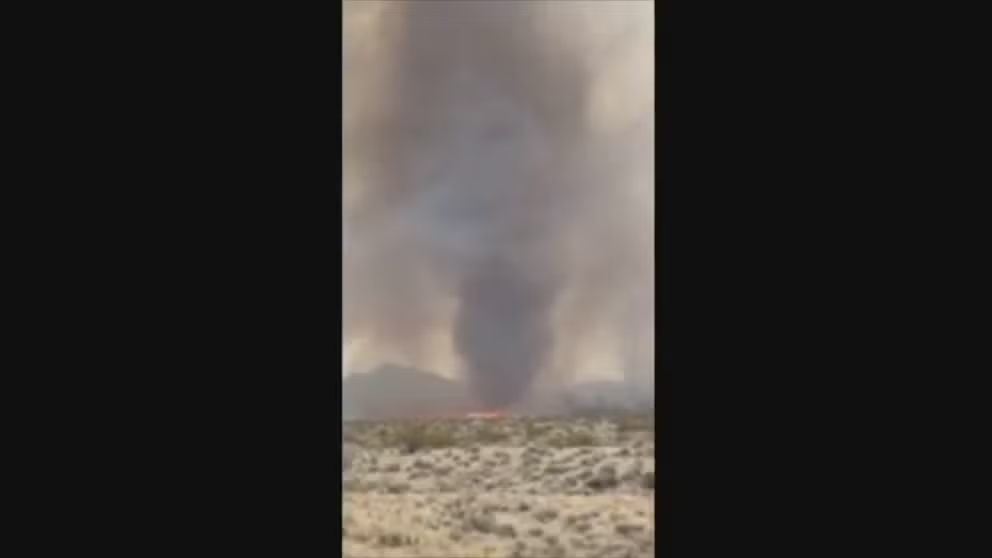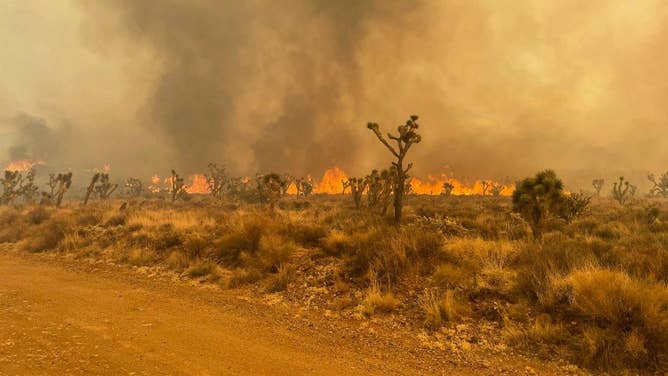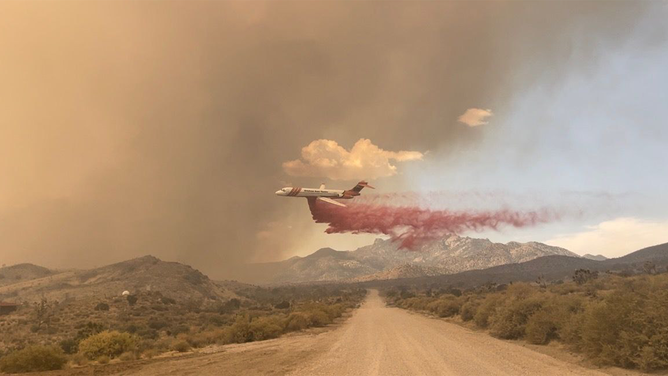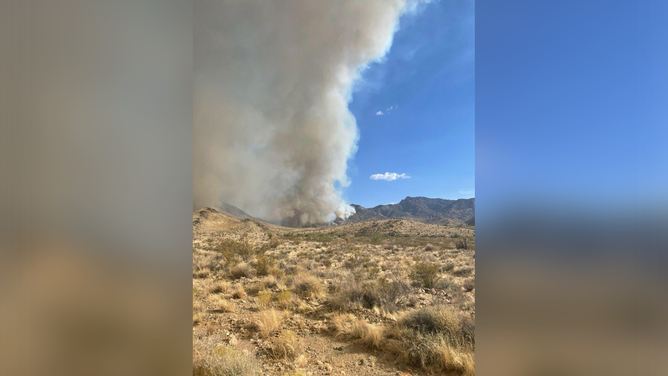York Fire winds down after charring nearly 100,000 acres of Mojave National Preserve
The York Fire began on July 28 in the New York Mountain Range of the Mojave National Preserve, growing over the past week to become the largest wildfire in California of 2023.
Watch: Fire whirls sweep across Mojave National Preserve as York Fire scorches landscape
Cameras captured video of a massive fire whirl that was sweeping across the landscape inside California's Mojave National Preserve as the York Fire scorched the landscape.
MOJAVE NATIONAL PRESERVE, Calif. – California's largest wildfire of the year thus far is almost fully contained, but not before it torched nearly 100,000 acres and burned some of America's most iconic plants that live in the Desert Southwest.
The York Fire began on July 28 in the New York Mountain Range of the Mojave National Preserve. It quickly grew to consume nearly 94,000 acres across southeastern California's San Bernardino County, plus more than 9,000 acres across the border into southern Nevada. That ranks it as the largest wildfire in California of 2023.
As of Sunday morning, the fire is 93% contained.
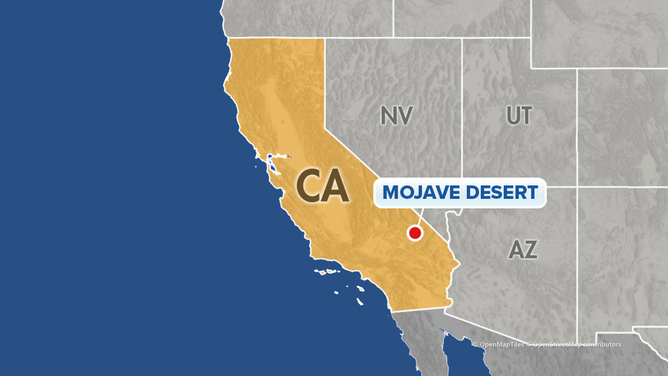
Map showing the location of the Mojave Desert.
(FOX Weather / FOX Weather)
Firefighting efforts have become more targeted, with crews focusing on patrolling for hot spots and monitoring cooled areas. Officials said firefighters are continuing to extinguish any remaining heat on the fire's perimeter.
They added that the demobilization of excess resources has begun. However, sufficient resources will remain to complete all objectives, and air support is available if needed.
With the fire mostly contained the Mojave National Preserve issued a closure order within the preserve for the York Fire burn area.
Joshua trees threatened by York Fire
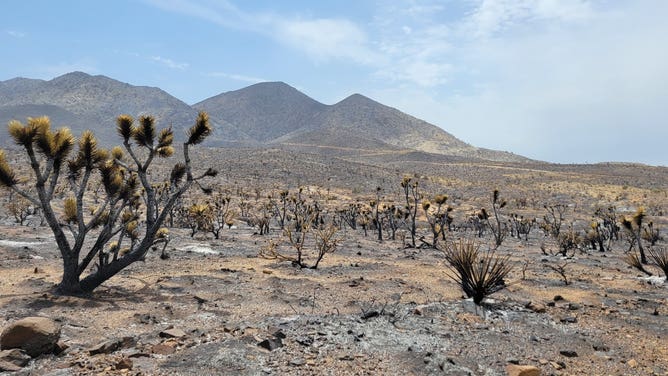
A charred landscape remains after the York Fire burned through part of the Mojave National Preserve. August 4, 2023.
(Nick Graver / NPS / FOX Weather)
As the fire raged through the desert landscape of the Mojave National Preserve, it burned a number of Joshua trees - some of the most iconic plant life in the Mojave Desert.
It is still too early to say exactly how many have been destroyed, according to the National Park Service, as the roots of Joshua trees can sometimes survive a fire even if the rest of the tree burns, depending on how hot the fires burned.
CALIFORNIA WILDFIRE BURNS JOSHUA TREES IN MOJAVE NATIONAL PRESERVE
While Joshua trees are adapted to survive harsh desert conditions, officials said they have limited natural defenses or propagation techniques when fires occur around them.
"While there are areas in which nearly 100% of these trees burned, there are large, unburned areas of trees within the York Fire perimeter," Mojave National Preserve wrote on Facebook. "In the coming weeks, natural and cultural resources staff will survey the impact of the fire on the preserve’s Joshua trees and assess the need for rehabilitation."
Tortoises on the run
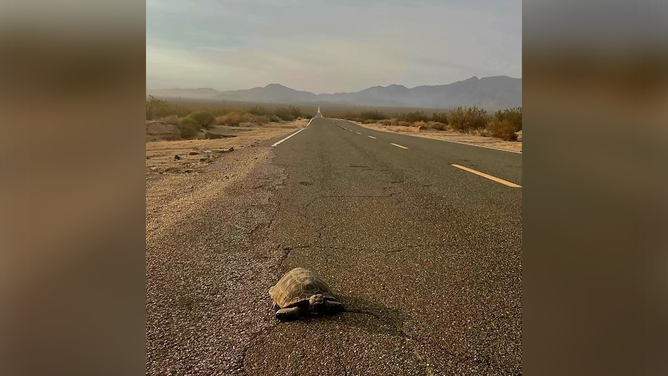
A desert tortoise is seen crossing a road inside the Mojave National Preserve.
(Mojave National Preserve / FOX Weather)
In addition to plant life, park officials worried about the well-being of animal life as the York Fire burned in the MNP.
That includes the desert tortoise, an animal that has been federally recognized as a threatened species and lives in the desert valleys.
MNP staff believe that the York Fire has only caused minimal damage to critical tortoise habitats and has likely only affected a few tortoises, since observations of the reptiles in the area are rare.
AS CALIFORNIA'S YORK FIRE ADVANCES, WILDLIFE MOVE TO SAFETY INSIDE MOJAVE NATIONAL PRESERVE
They also noted that most desert wildlife, including tortoises, can move to safety when a fire approaches the area.
Fire whirls add danger to firefighting efforts
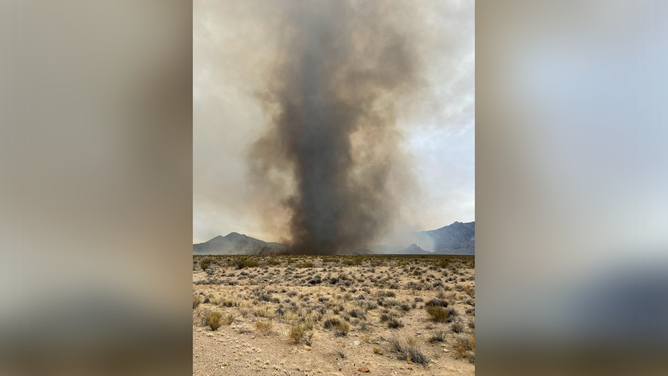
A fire whirl is seen spinning across the desert as the York Fire continues to burn along the California/Nevada border on July 30, 2023.
(Mojave National Preserve / National Park Service / Facebook / FOX Weather)
Exacerbating the well-being of desert plants and animals during the York Fire was the presence of fire whirls.
According to the NPS, fire whirls are similar to dust devils but are specifically associated with the heat and energy released by a wildfire.
They can be dangerous in that they can spread embers and ignite new fires.
How the weather will impact the York Fire
Dry air and seasonal heat have moved back into the region, bringing more challenging conditions for firefighters, according to officials. Temperatures will be in the mid-90s with single-digit humidity and gusty winds.
Officials also noted that smoke from the fire is reaching into Nevada and southern Utah.
Officials said, due to a combination of a wet winter and increasing levels of invasive grasses and mustards expanding across the Mojave and Colorado Deserts, the Mojave National Preserve is seeing a rise in fire frequency over the past 10 years.
